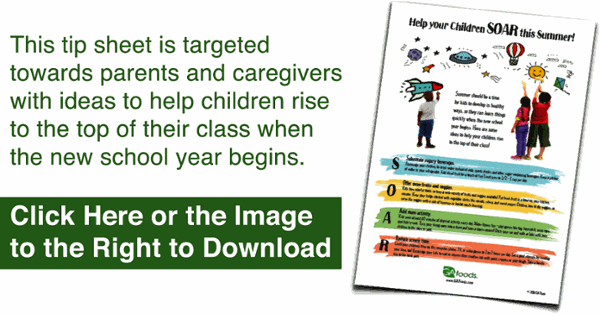 Throughout the school year, many children rely on school meal programs to keep hunger at bay. Due to food scarcity in the home, these meals may be the only substantial nutrition some of these kids receive each day. However, when summer break arrives, many of these child nutrition programs end and kids are left hungry. This is when they require community assistance to fill the gap. Here are ways that communities can get healthy summer meals to children in need.
Throughout the school year, many children rely on school meal programs to keep hunger at bay. Due to food scarcity in the home, these meals may be the only substantial nutrition some of these kids receive each day. However, when summer break arrives, many of these child nutrition programs end and kids are left hungry. This is when they require community assistance to fill the gap. Here are ways that communities can get healthy summer meals to children in need.
The Summer Food Service Program
Summer should be a time of rest and fun. It should also be a time for kids to develop in healthy ways so that they can learn things quickly when the new school year begins. Children living in poverty are at a disadvantage in summer because they no longer have access to the meals they normally get in school.
Hunger leads to increased illnesses and delayed development, which puts these children behind their peers when school starts again. If you wonder what can be done about this, you aren’t alone. Many people are unaware of government resources that are available for providing free summer meals to kids. One of the biggest programs is the USDA’s Summer Food Service Program, which provides reimbursement for organizations offering summer meal programsfor eligible children. If you want to mobilize a new summer food service for hungry kids in your area, your first step should be to look over the USDA’s programguidelines and contact them for assistance.
Ideas for Distributing Summer Meals to Children
Using mobile units
Even when there are food programs in place, the number of needy children receiving meals can fall drastically in summer. This usually occurs because many lack transportation to the food sites. Mobile food units solve this problem by bringing the food closer to home.
Different types of mobile units can be used. For example, if a neighborhood contains daycare centers or community centers with kitchenettes, refrigerated trucks can be used to deliver the food and leave it at the site. However, in rural areas and neighborhoods without suitable kitchen areas, mobile units like food trucks are usually a better option. These do not have to be actual food trucks. Many communities have creatively repurposed old buses, campers or minivans to serve as mobile kitchens.
For the best impact, mobile units should be distributed to several different areas in the community. By planning half hour to one hour stops at various points in neighborhoods, a greater number of children can be reached and fed each day.
Combining meals with fun activities
One of the most important parts of creating a successful meal program is making kids feel welcome. Combining the service with games, contests and athletic events, or bringing in entertainers helps generate more publicity and excitement. Pairing free meals with summer fun can also draw kids who are wary of being identified as poor and hungry. The activities give them another reason to show up.
These events can be held at public parks, schools, recreation centers and similar sites around the community. To reach the most children in large metropolitan areas, it is best to host these at several locations.
Combining child nutrition services with senior programs
Some communities offer programs similar to Meals on Wheels but they deliver food to children in summer and not just senior citizens. However, this isn’t the only way that child and senior services could be combined. By sponsoring summer food service programs at senior centers, assisted living centers and similar venues, you can improve child nutrition while providing social opportunities between generations.
Getting the Word Out
The impact of the best meals program won’t be very strong if few people know about it. No matter how great the program is, it relies on some footwork to make the community aware of it. Here are easy ways to spread the word:
- Ask television stations to mention it during broadcasts.
- Put and announcement in the community section of your local newspaper.
- Distribute flyers to neighborhood churches, shops, homes and community centers.
Flyers should contain all the information that kids and parents need to know about the program. This includes who is eligible for free meals, days and times the meals will be distributed, and what, if anything, kids should bring. In most cases, kids just need to show up to be fed.
Thanks to the help of the summer food service program and local volunteers, summer meal programs can cost little to operate yet they make a big difference in the lives of hungry kids. GA Foods provides food service to summer meals centers, both large and small.
Improving child nutrition in summer means these kids can perform better the following school year. Healthy mental, physical and social development requires adequate food. As we support summer meals for kids, we are paving the way for a healthier community as a whole. If you are looking for a local program for your children, click here.











